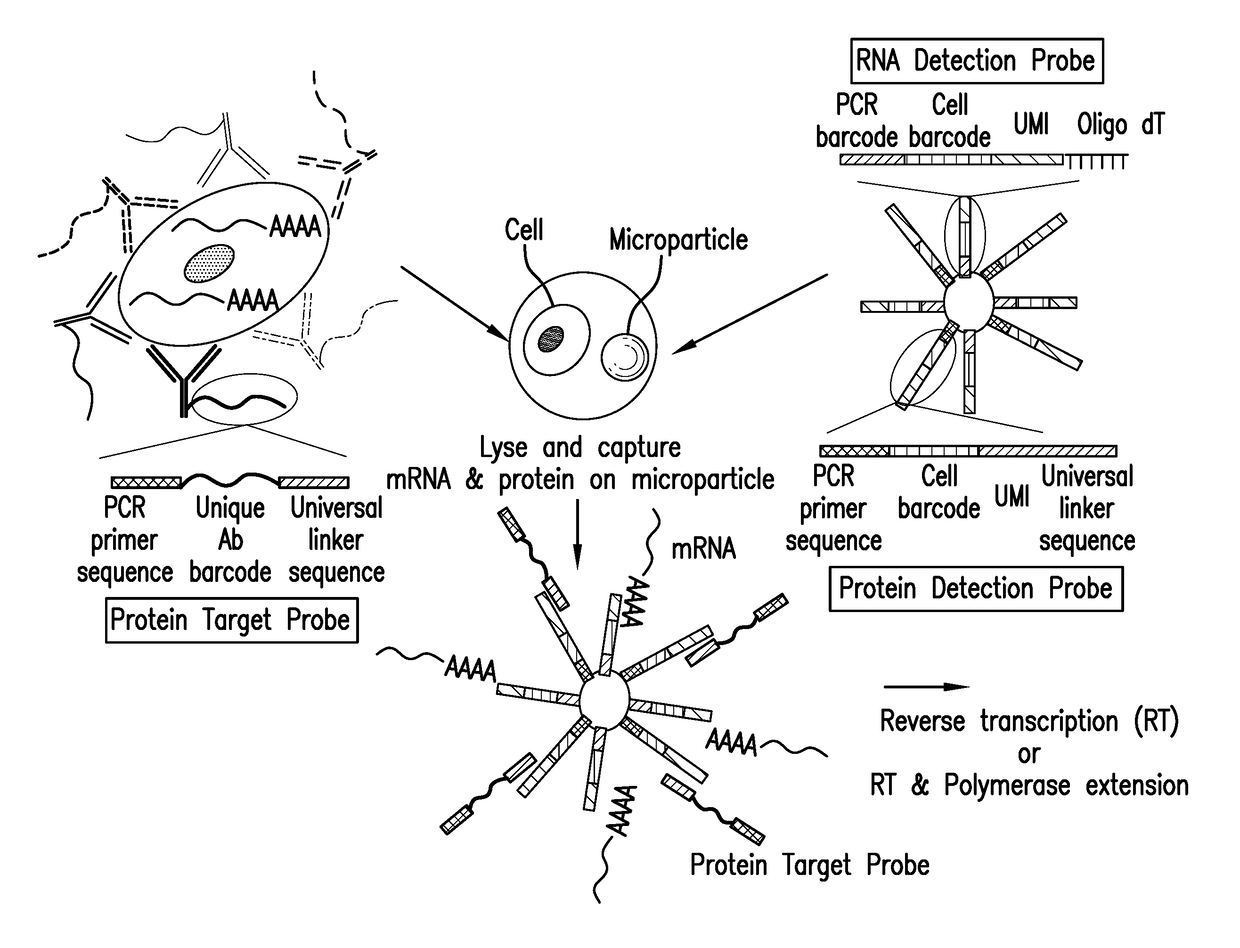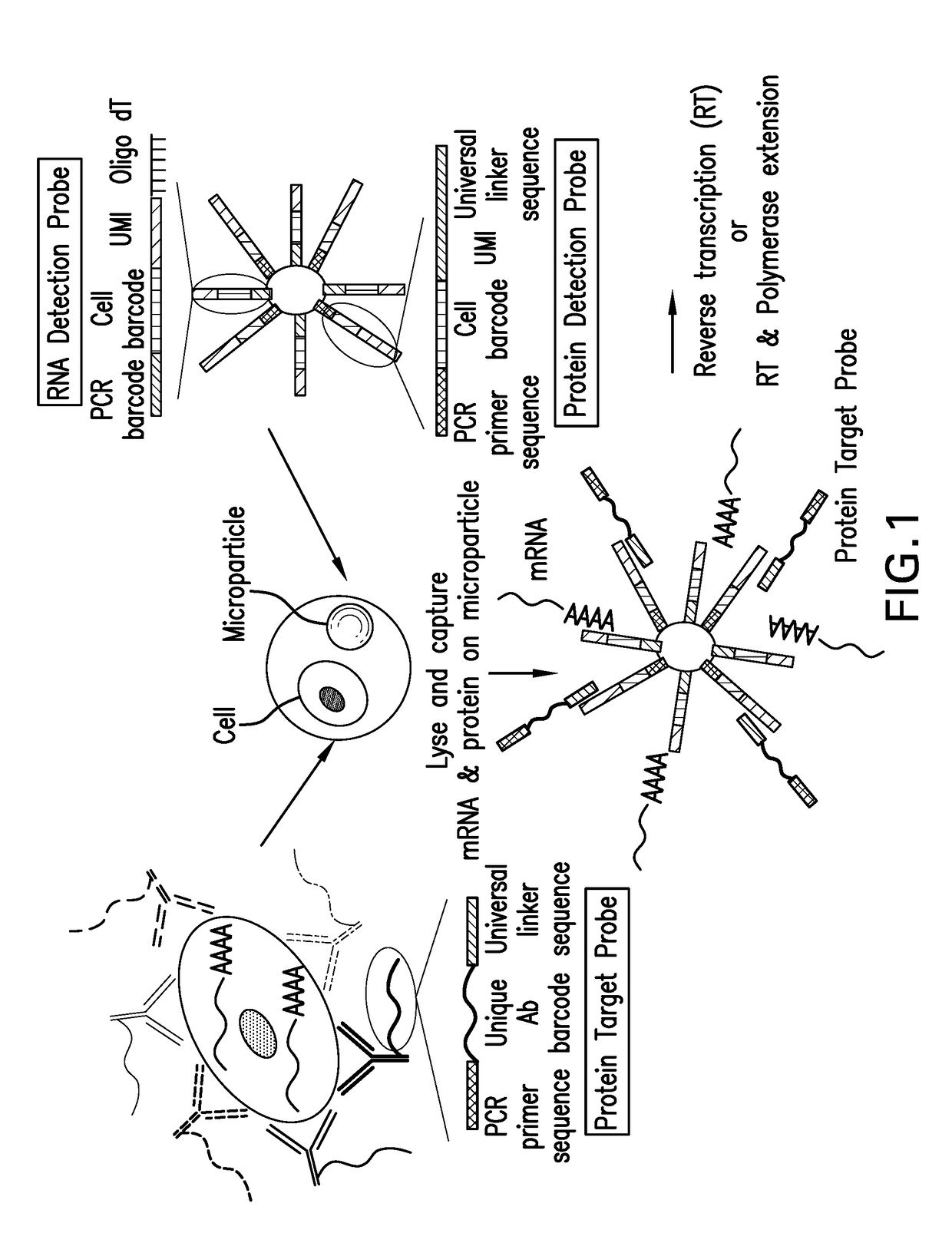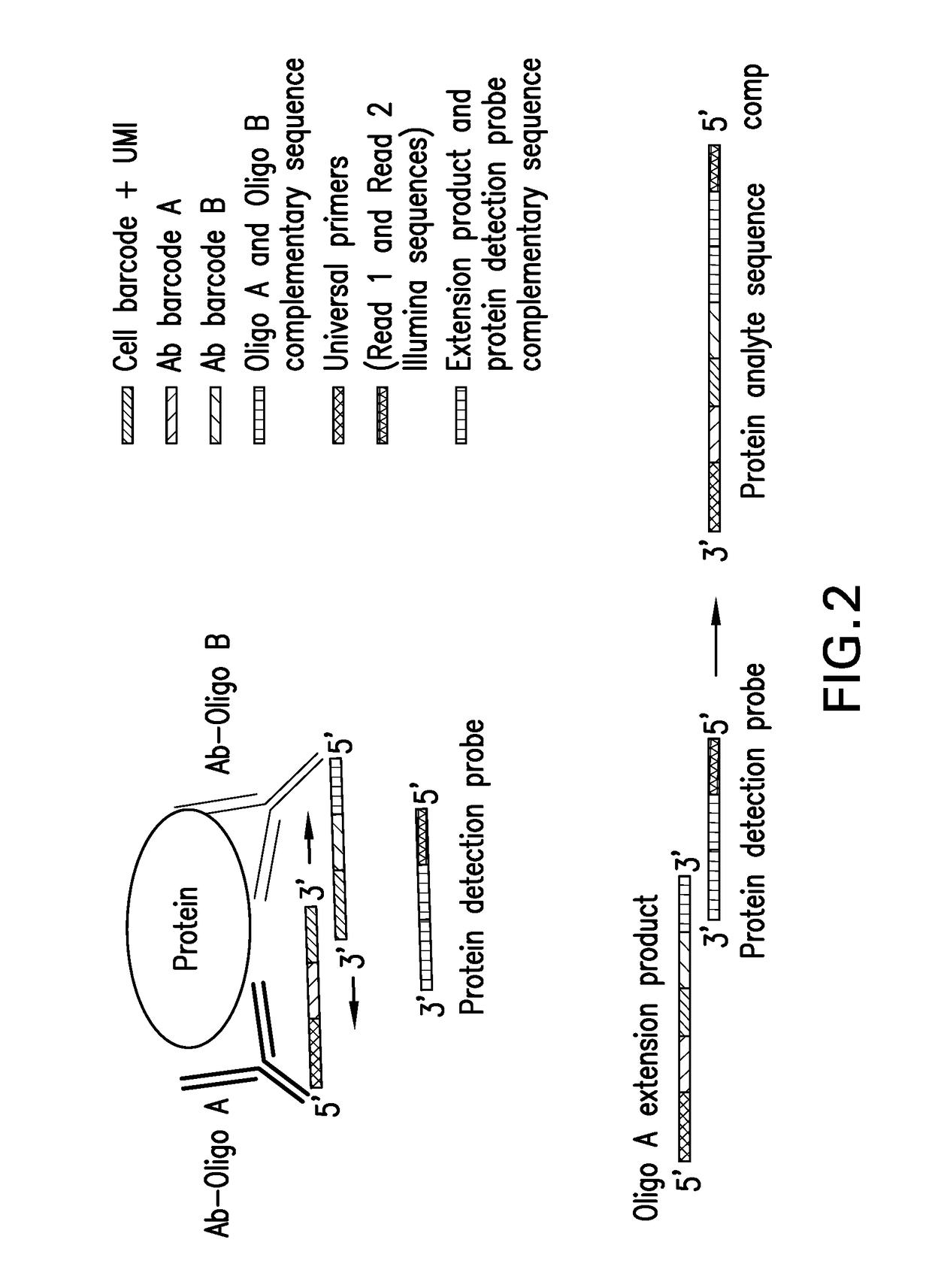Assay for simultaneous genomic and proteomic analysis
a technology of simultaneous genomic and proteomic analysis, applied in the direction of microbiological testing/measurement, biochemistry apparatus and processes, etc., can solve the problems of small size, heterogeneous cellular content, difficult to obtain clinical samples especially in immuno-oncology areas, etc., and achieve high throughput screening and efficiently capture and analyze cells
- Summary
- Abstract
- Description
- Claims
- Application Information
AI Technical Summary
Benefits of technology
Problems solved by technology
Method used
Image
Examples
example 1
of Protein Detection Probes
[0022]Antibodies are conjugated to nucleotides via commercially available kits such as Thunder-link by Innova Biosciences (Lundberg et al., 2011a) and the antibody-oligonucleotide all-in-one kit by Solulink. Solulink's technology is based on the use of two complementary heterobifunctional linkers. It uses a two-step process to prepare an antibody-oligonucleotide. In the first step, an amine-modified 20 to 60 mer oligonucleotide is modified using an excess of Sulfo-S-4FB linker or by solid phase oligonucleotide synthesis using 4FB-phosphoramidite (Kasai et al., 2012). This reactive NHS-ester incorporates a 4FB (aromatic aldehyde functional group, formylbenzamide) at the desired terminus (5′ or 3′ end) of the oligonucleotide. In the second step, polyclonal or monoclonal antibodies are modified with S-HyNic linker. This NHS-ester reacts with lysine residues on the antibody incorporating HyNic functional groups (hydrazino-nicotinamide). The HyNic-modified anti...
example 2
Protein Molecules with Target Probes
[0028]Protein molecules on the cell surface of living cells are labeled with antibodies conjugated to oligonucleotides or aptamers. To label intracellular protein molecules the cells are fixed and permeabilized. Then antibodies conjugated to oligonucleotides or aptamers are added. Cells are centrifuged and supernatant with excess unbound antibodies or aptamers is removed. Washes are conducted to further remove unbound antibodies and aptamers. Cells are isolated and protein detection probes are added that will bind to the protein target probes.
[0029]Alternatively, cells are lysed and extracellular and intracellular protein molecules are in solution. For each protein molecule of interest two antibodies, each conjugated with its own oligonucleotide with a complementary sequence to each other is added. A signal is produced only when the two antibodies bind to the same protein molecule and bring the two oligonucleotides in proximity, and form a DNA tem...
example 3
RNA Molecules with Detection Probes
[0030]Detection probes containing a poly dT sequence capture the polyA tail of the mRNA. The mRNA is reverse transcribed to cDNA and a template switching oligonucleotide (TSO) is used to introduce a PCR handle downstream of the synthesized cDNA (Zhu et al., 2001). Exonuclease 1 (NEB) is added to remove excess unbound detection probes. The cDNA is PCR amplified and then is quantified. The cDNA is fragmented and amplified for sequencing with the Nextera XT DNA sample prep kit (Illumina) using custom primers that enabled the specific amplification of only the 3′ ends (Macosko et al., 2015).
[0031]Alternatively, library preparation is based on the CEL-Seq protocol with minor modifications (Jaitin et al., 2014). The workflow of DNA library preparation is summarized as follows: reverse transcription (RT)→Exonuclease I→SPRI purification (SPRIP)→Second Strand Synthesis (SSS)→SPRIP→T7 in vitro transcription linear amplification→SPRIP→RNA Fragmentation→SPRIP→...
PUM
| Property | Measurement | Unit |
|---|---|---|
| specific diameter | aaaaa | aaaaa |
| length | aaaaa | aaaaa |
| size | aaaaa | aaaaa |
Abstract
Description
Claims
Application Information
 Login to View More
Login to View More - R&D
- Intellectual Property
- Life Sciences
- Materials
- Tech Scout
- Unparalleled Data Quality
- Higher Quality Content
- 60% Fewer Hallucinations
Browse by: Latest US Patents, China's latest patents, Technical Efficacy Thesaurus, Application Domain, Technology Topic, Popular Technical Reports.
© 2025 PatSnap. All rights reserved.Legal|Privacy policy|Modern Slavery Act Transparency Statement|Sitemap|About US| Contact US: help@patsnap.com



